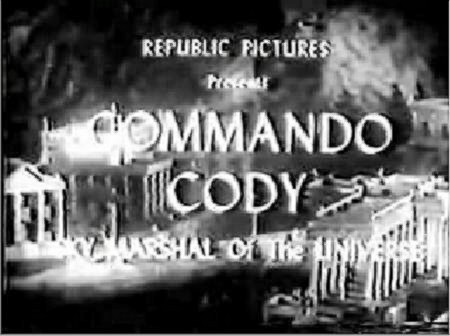#Commando Cody: Sky Marshal of the Universe
Text
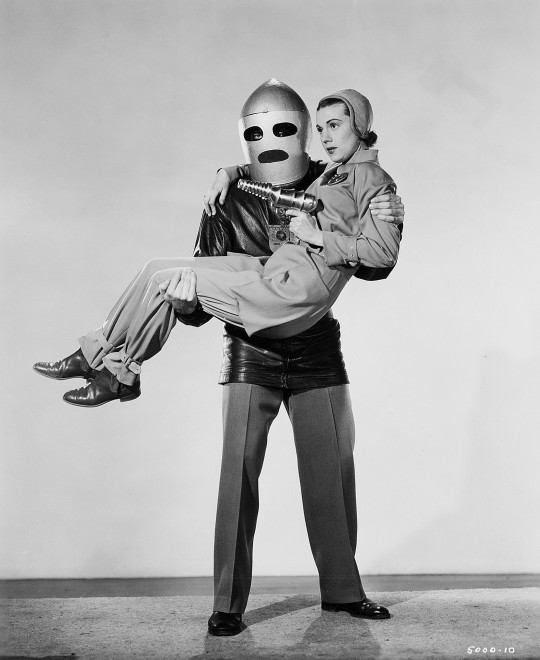
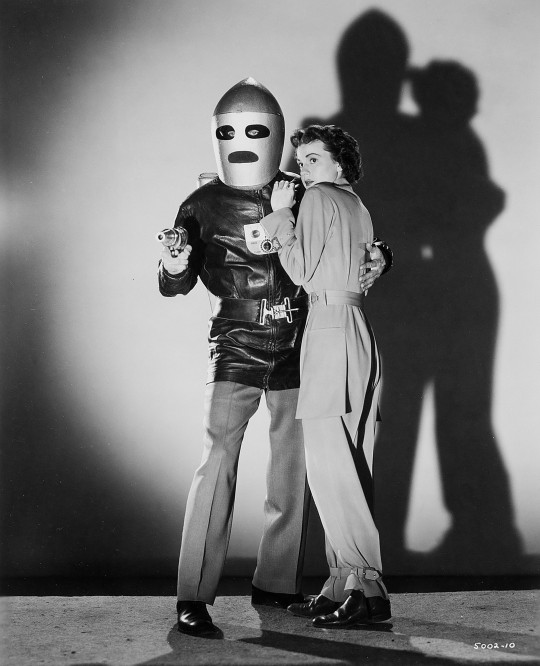
Judd Holdren and Aline Towne - Commando Cody: Sky Marshal of the Universe (1953)
#judd holdren#aline towne#commando cody: sky marshal of the universe#50s sci-fi#republic serials#50s film serials#1950s#1953
193 notes
·
View notes
Text

SPOILER ALERT: No one wearing anything even close to this costume appears in this serial.
14 notes
·
View notes
Text
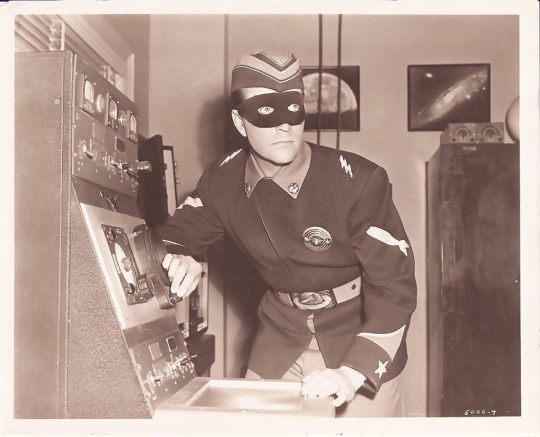
Commando Cody, Sky Marshal of the Universe
360 notes
·
View notes
Text
Younger folk may not remember, it probably wasn't taught in school, but back in '55, when we were attacked from outer space by an unknown enemy, a masked super-scientist built an atomic-powered space ship, travelled to the source of the missiles, and fought an escalating series of attacks including massive storms, deadly germs, darkening of the sun, a robot, a mind control ray, artificial suns, pushing the Moon out of orbit, and tilting the Earth's axis.
0 notes
Text
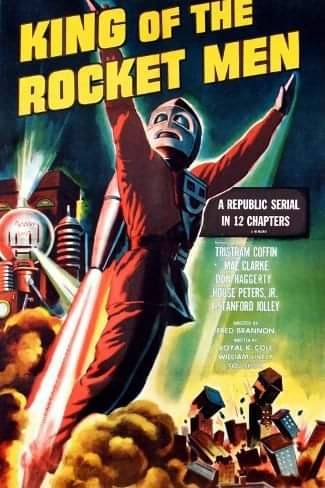
King of the Rocket Men es una serie de películas en blanco y negro de 12 capítulos de 1949de Republic Pictures , producida por Franklin Adreon , dirigida por Fred C. Brannon , protagonizada por Tristram Coffin , Mae Clarke , Don Haggerty , House Peters, Jr. , James Craven e I. Stanford Jolley .
Esta serie de películas se destaca por presentar al único personaje llamado "Rocket Man", un nombre inapropiado que los fanáticos aplicaron a los otros héroes propulsados por cohetes de la República que siguieron en sus series posteriores: Radar Men from the Moon (1952), Zombies of the Stratosphere (1952) y Commando Cody: Sky Marshal of the Universe (1953).
1 note
·
View note
Note
my headcannon is that Cody is just really good at hacking and programming and that's what he's named after, he just doesn't advertise it.
And you know what he hacked into? The trainers' personal database, where they kept their bootleg copies of Commando Cody: Sky Marshal of the Universe!
The Rocket Man is the reason he's always had a jetpack.
#commandar cody#headcanons#commando cody sky marshal of the universe#cody's name is not kote#and i will die on this hill#xD#ask#betternamenot2come
25 notes
·
View notes
Photo
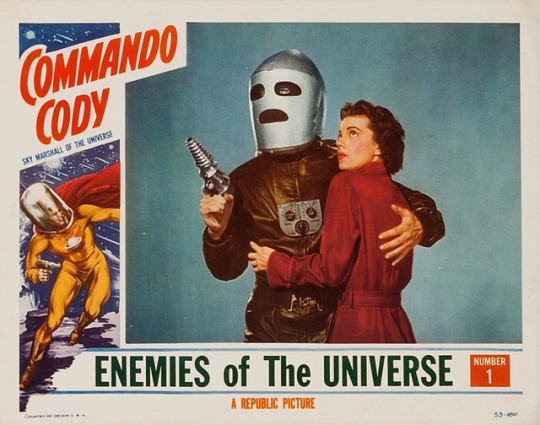
Lobby card for chapter 1 of the 1953 sci-fi serial Commando Cody: Sky Marshal of the Universe.
#commando cody#science fiction#space#vintage#1950s#commando cody: sky marshal of the universe#sky marshal of the universe
65 notes
·
View notes
Note
Cody was originally Kote but decided to change his name to Cody a few weeks later after commando cody, the sky marshal of the universe
HE'S A FANBOY Y'ALL
cadet cody named himself kote, then watched 12 episodes of commando cody: sky marshal of the universe and instantly knew what a) name and b) rank he wants
cadet cody, to the commanding batch: so i'd like you guys to call me cody from now on
fox: sure
cadet cody: and one day i will be the sky marshal of the universe
fox: lol whatever
[a couple of years later]
cody, who just got promoted to marshal commander:
fox: ,,excuse me
492 notes
·
View notes
Note
Re: the cody/kote thing, people were so desperate to make the clones culturally mandalorian they gave them all ‘secret’ mando names that they then either just use the basic translations or a word that sounds similar so the Mean Jedi don’t hate them for being jango’s clones? unwillingly created clones? Which naturally leads to a lot of ‘my real name!’ trope stuff.
Completely ignoring the fact that cody is named cody after ‘commando cody: sky marshal of the universe’ a specific piece of scifi that was being referenced with his character name.
The kote thing was fun at first but it’s gotten annoying with how fast people have started to treat it like word of god?
Yeah, that’s about my feeling on the matter. I’ve gotten comments on some of my Cody fics that demand i add the “real” name thing, or that use Kote instead of Cody, and it gets kind of aggravating that people don’t even bother to check if it’s canon or not before they harass authors about it.
60 notes
·
View notes
Photo
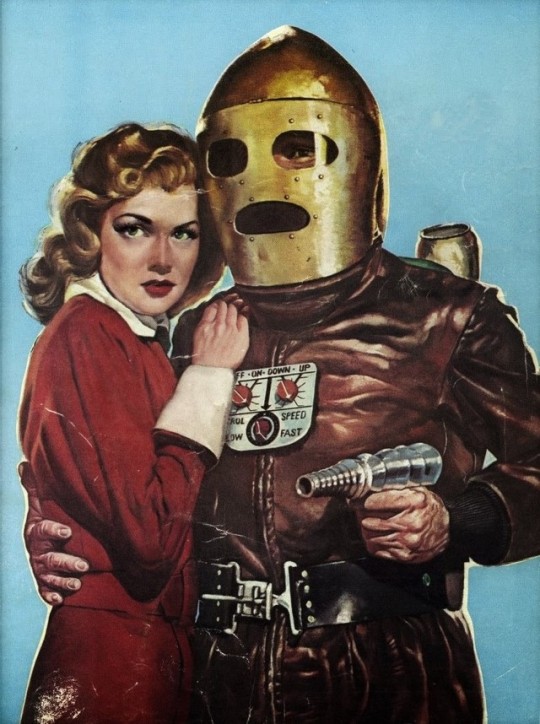
Commando Cody: Sky Marshal of the Universe (1953)
#commando cody#sky marshal of the universe#50s serials#sci-fi serials#judd holdren#aline towne#rocket man#republic pictures#spacemen magazine#1950s#1953
341 notes
·
View notes
Text
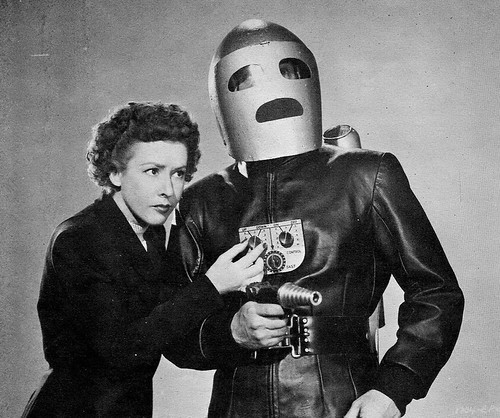
Joan Gilbert trying to give Commando Cody a purple purple.
#Commando Cody: Sky Marshal of the Universe#Commando Cody#Judd Holdren#Joan Gilbert#Aline Towne#movie serials
13 notes
·
View notes
Text

Commando Cody, Sky Marshal of the Universe
139 notes
·
View notes
Text
Gorgo
I recently rewatched Gorgo, a 1961 US / UK / Irish kaiju co-production, a film I hadn’t seen in several years (at least five, maybe as many as ten).
The last couple of times I watched it I wasn’t paying close attention, just letting it play in the background as I did other stuff.
Now, having actually paid attention to it again, I’m delighted it holds up as well as my memory told me it did.
I first encountered Gorgo in 1961 when my father took my younger brother and I to see it as the Fine Arts Theater in Asheville, NC.
The Fine Arts, one of only two movie theaters in Asheville (there may have been a 3rd that I didn’t know about due to the segregation laws of that era) specialized in more outre’ fare and typically got the monster and horror shows, as well as the Hercules movies and =ahem!= adult dramas.
It was a memorable trip for several reasons, not the least of which being my younger brother freaking out at the climax when he turned to grab Dad’s arm only to find Dad had gone to the rest room.
Not a great movie but certainly a good one, Gorgo in retrospect was somewhat groundbreaking and as such more deserving of attention.
The late film historian Bill Warren and I would often discuss old sci-fi movies. Bill, of course, wrote the seminal reference work on 1950s sci-fi movies, Keep Watching The Skies (highly recommended; go order it right now).
He argued that the fifties sci-fi boom may have started in 1950* but it really ended in 1962 when the last of the films put into production in the 1950s finally came out.
I argued that the line was fuzzier, greyer, with some titles showing a clearly different mindset than others released the same year.
Such is the case with Gorgo.
Basically, 1950s sci-fi is about re-establishing the status quo. Several end quite explicitly stating this (Earth Vs. The Flying Saucers for one) while others allude to the fact that the menace may return…someday.
But their point always was that by the end of the picture things returned to what passed for normal.
Even Forbidden Planet returns to normal by destroying Altair IV and the truly god-like Krell machines found there, thus preventing anyone else from using them.
But 1960s sci-fi had an entirely different flavor, and that flavor was that by the end of the movie things had changed irrevocably and forever.
There was no going back to the way things were, there was only the new normal -- however different and bizarre that normal might be.
Gorgo is a sixties sci-fi film.
Giant monster movies -- what we now refer to as kaiju due to Japan’s dominance of the genre -- started way back in the silent era (like almost everything else in cinema, Georges Melies got there first) with King Kong as the most prominent example before the atom age.
King Kong’s success on TV in the late 40s spurred Warner Bros. to make The Beast From 20,000 Fathoms and that in turn spurred Toho to make Gojira (US title: Godzilla, King Of The Monsters) and that inspired a giant monster race on both sides of the Pacific.
England, not wanting to feel left out of the fun, made The Giant Behemoth which is an okay but underwhelming example of the genre, noteworthy only for being stop motion animators Willis O’Brien’s last feature work (he worked on other films after that, but not as an animator).
By the late 1950s Godzilla’s popularity inspired the King brothers (US slot machine distributors) to make their own giant monster movie, and despite their unfamiliarity with the genre they made several smart decisions, the first of which was hiring Eugene Lourie.
Lourie had one of those fabulous “cast your fate to the wind” careers that included working as art director on Jean Renoir films in France.
Like so many others, as the Nazis rose in power, Lourie came to America where he continued doing art direction among other behind the camera film work. His experience with special effects got him a gig direction The Beast From 20,000 Fathoms and from there he directed a few TV episodes then The Colossus Of New York (not what we’d call a kaiju film today, but definitely one of the oddest sci-fi movies ever made) and The Giant Behemoth (itself essentially a remake of The Beast From 20,000 Fathoms).
When the King brothers approached him to direct Gorgo, he was reluctant, agreeing to make the film only they let him do something no other sci-fi film of the 1950s (or before!) had ever done: Let the monsters win.
While Lourie later complained he felt the film fell short of what he intended, there’s no denying he was swinging for the outfield fence with this one.
The King brothers’ best idea was that they’d start with a 20-ft tall monster getting captured and brought to London, only for the protagonists to belatedly realize they’ve captured a baby and mama is gonna come looking for him.
It ends with Mama defeating everything humanity had to throw at it and returning to the sea with her child, the surviving humans watching them depart and realizing they can no longer consider themselves the absolute masters of all they survey.
That point gets lost in the feel-good moment of mother rescuing child, but it’s there, and it marks Gorgo as one of the first sci-fi films to embrace the concept that change was inevitable and inescapable.
Gorgo is an expertly crafted film, not perfect by a long shot, but satisfying all the way through. Lourie’s talent as an art director contributed mightily to the film’s final dramatic effect, and the scenes of London panicking as Mama Gorgo comes looking for her child has an intensity lacking in most kaiju films.
As Bill Warren observed, there’s not a lot of originality here, but that’s okay because Lourie and the King brothers covered a number of details typically left out of movies like this, namely how the %#$@ are you going to get your kaiju back to civilization?
Sharp eyed observers will notice a lot of stock footage in this movie (with footage of the British and US navies being used interchangeably for the same ships and crews), but Lourie also disguised some of it well.
The cost conscious King brothers filmed a lorry carrying a full size replica of Gorgo (doped up and trussed up with nets) through a deserted Piccadilly Circus by sneaking cameras in and doing a wholly unauthorized shoot early on a Sunday morning (explained away in the film as the police ordering people off the streets to reduce the danger of Gorgo escaping).
In a couple of scenes Lourie superimposes his actors over background plates shot for big budget WWII epics, creating a far larger sense of scale than the movie actually had.
The miniatures and the lighting of same are exceptionally well done and very convincing for the era. Matte work to combine the Gorgos with humans is pretty seamless.
The Gorgo monster suit itself? Ehhh…not quite so well done. Call it adequate, certainly not an embarrassment, but far from the best example of the genre.
The movie certainly ended in a far different place than other kaiju of the era and ended up having a surprisingly long half-life as a comic book spin off by Steve Ditko that followed the adventures of Gorgo and his Mama.
There’s a lot that can be done with this kaiju combination, and it’s a shame that’s going to waste.
If ever there was a movie deserving of an upgraded remake, it’s Gorgo.
© Buzz Dixon
* When a particular epoch in pop culture starts / stops is always open to debate. Since Bill wouldn’t consider short films or serials in Keep Watching The Skies he omits several serials released before 1950 that anticipated the sci-fi boom, in particular The Purple Monster Strikes, the first of Republic’s Martian invasion serials as well as the first cinematic sci-fi excursion to include all of the key elements of 1950s American sci-fi: Paranoia, alien invasion, body possession. (For those keeping score at home, the Republic Martian serials are The Purple Monster Strikes, Flying Disc Man From Mars, and Zombies Of The Stratosphere though one can argue King Of The Rocket Men, Retik, The Moon Menace, and Commando Cody, Sky Marshall Of The Universe are crossovers of one kind or another; the first three serials were unintentionally linked when cost conscious Republic decided to recycle costumes and props and rewrote dialog to refer to prior releases in order to cover their budgetary limits.)
1 note
·
View note
Photo
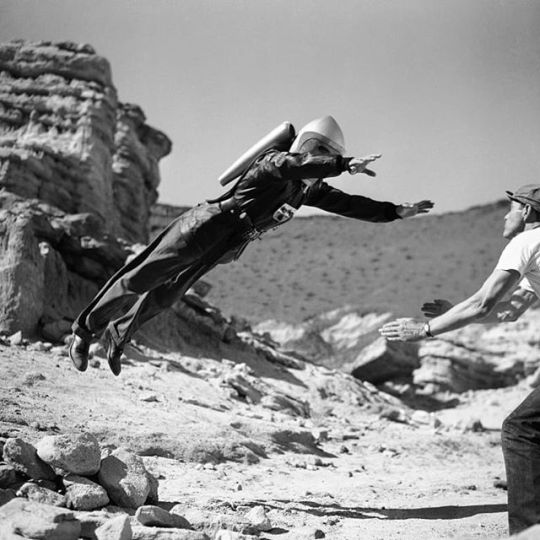
Tonight’s Sci-Fi Double Feature Night starts with… “Radar Men from the Moon”! A 1952 12 part Republic Serial introducing Commando Cody, a hero wearing the recycled Rocket Man suit from the earlier 1949 “King of the Rocket Men!” If 12 episodes isn’t enough Commando Cody action for you, he reappears in the 1953 “Commando Cody: Sky Marshal of the Universe”. The suit is then recycled again for “Zombies of the Stratosphere” (written as a sequel to “Radar Men from the Moon”) worn by the character “Larry Martin”. It was part of the inspiration for “The Rocketeer” (1991).
5 notes
·
View notes
Text
Why is half the fandom now under the impression that Cody’s “actual name” is Kote? I know it’s a fun headcanon that got really popular, but the two don’t even sound that alike (based on the way Kote is pronounce in Vode An).
It’s Commando Cody: Sky Marshal of the Universe erasure!
#sw talk#i mean i really liked the headcanon but it's becoming so prevalent i'm kinda weirded out#i've seen quite a few people think it's actual canon#but 95% of the clones' ties to mandalorian culture are fanon#calling each other vod? we made that up#mandalorian names? yeah the EU had some but never the movies or tcw#mandalorian symbols? two that we see#rex's jaig eyes and boil's death watch symbol - don't mean much#kanan gets jaig eyes too#being fluent in mando'a? you bet we invented that#only mandalorian trainers? EU books thing invalidated by TCW#jango teaching them about mandalore? EU thing#remembrances? never seen#actually we see jedi do that in some EU comics - not clones#like it's cool we gave the clones traditions and all#really#but i feel like people are so attached to the notion that clones are mando that it takes away from their actual characterization#which was that they had no ties to anyone and anything at all#no father because jango *wasn't* caring#no ties to kaminoan culture because the kaminoans were jerks#and so the only thing they did have was themselves and they built their identities around that#anyway it's just one of those little canon vs fanon thing that intrigues me#fanon vs canon
1K notes
·
View notes
